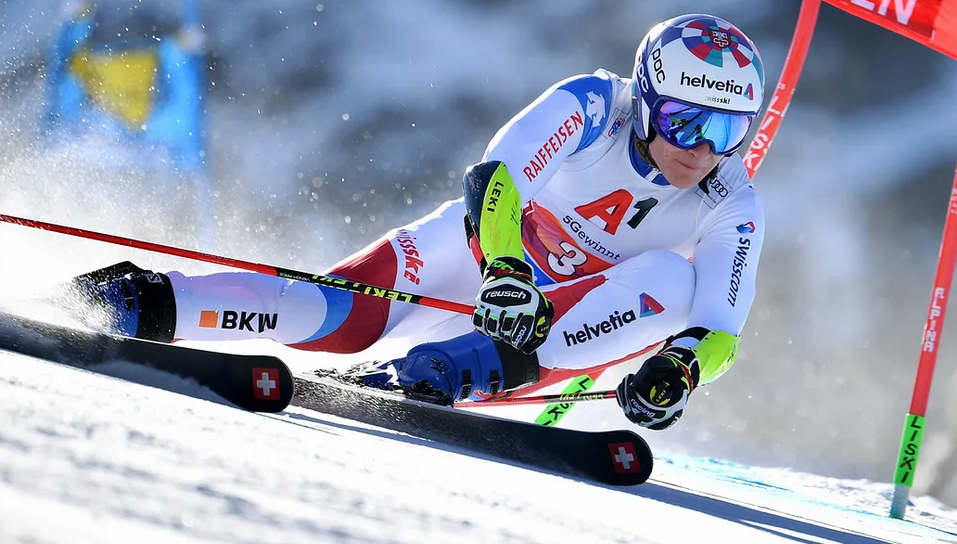Edge Angle and Pressure
Image by M.D.Pozzo/Alamy
Overview
Tighten your turn by creating edge angle and applying pressure on the outside ski with four movements — flex your outside ankle, move forward, roll your inside leg, and shorten your inside leg.
Avoid tipping the outside knee inward and separating at the waist to maintain pressure on the outside ski and reduce the risk of injury.
The tighter you want your turn to be, the greater the edge angle and pressure you will apply to your outside ski by using the following movements.
Image Created by ARM
The Ski Technique Modules on how to perform these movements are below.
-

Flex the Outside Ankle
Flex your outside ankle towards your big toe and feel pressure under the ball of your foot. Stand on your outside ski.
-

Move Forward
Move your core and chest over your feet and down the hill. Feel pressure increase against your outside ski.
-

Roll the Inside Leg
Roll your inside leg away from your outside leg.
-

Shorten the Inside Leg
Raise your inside heel and thigh while rolling your inside ankle and knee toward the snow.
Applying Pressure on the Outside Ski
You will feel pressure under the ball of your foot when you start a new turn by flexing the outside ankle toward the big toe. This is the first step in creating edge angle on the new outside ski.
The pressure will shift to the arch of your foot as your body moves over your feet and down the hill. This transition happens naturally and does not require a separate movement.
Firmly press your stacked outside leg through the arch of your foot, resisting the forces pushing back. Keep your shins flexed forward against the tongues or cuffs of both boots.
Avoid pushing too aggressively, as it can release the ski's energy too soon and shorten the carving action.
To lean more, visit the Learning Module Stack, Separate and Press
This video explains and demonstrates how skis create edge angle, bend and carve.
Video by Projected Productions
Image by ARM Using Chatgpt Open Ai
Movements ‘Excluded’
With ‘shaped’ skis, tipping the outside knee inward to create an edge angle is unnecessary. This action reduces pressure against the outside ski and increases the risk of knee injury. Refer to the Modules: Flex the Outside Ankle and Reduce Risk of Injury.
Separating at the waist is also excluded as this action applies pressure to the inside ski and interrupts the stacking of the core over the stacked outside leg. Elite skiers and racers instead create separation just below the shoulders, as demonstrated in the module.; Stack, Separate and Press .
Key Takeaways
Optimize Edge Angle: Increase the edge angle and pressure against the outside ski through four main movements: flexing the outside ankle, engaging core muscles to move forward, rolling the inside leg to maintain parallel shins, and shortening the inside leg while keeping shoulders level.
Avoid Common Mistakes: Avoid tipping the outside knee inward and separating at the waist, as these actions can decrease pressure on the outside ski, disrupt proper alignment, and increase the risk of injury.
Focus on Proper Techniques: Emphasize maintaining effective pressure on the outside ski and ensuring alignment by separating just below the shoulders and stacking the core and outside leg against the ski.
Suggested Learning Modules
Return to Ski Technique
Important Message: Skiing and ski racing involve inherent risks. It’s essential to ski responsibly and stay within your skill level and personal comfort limits.



